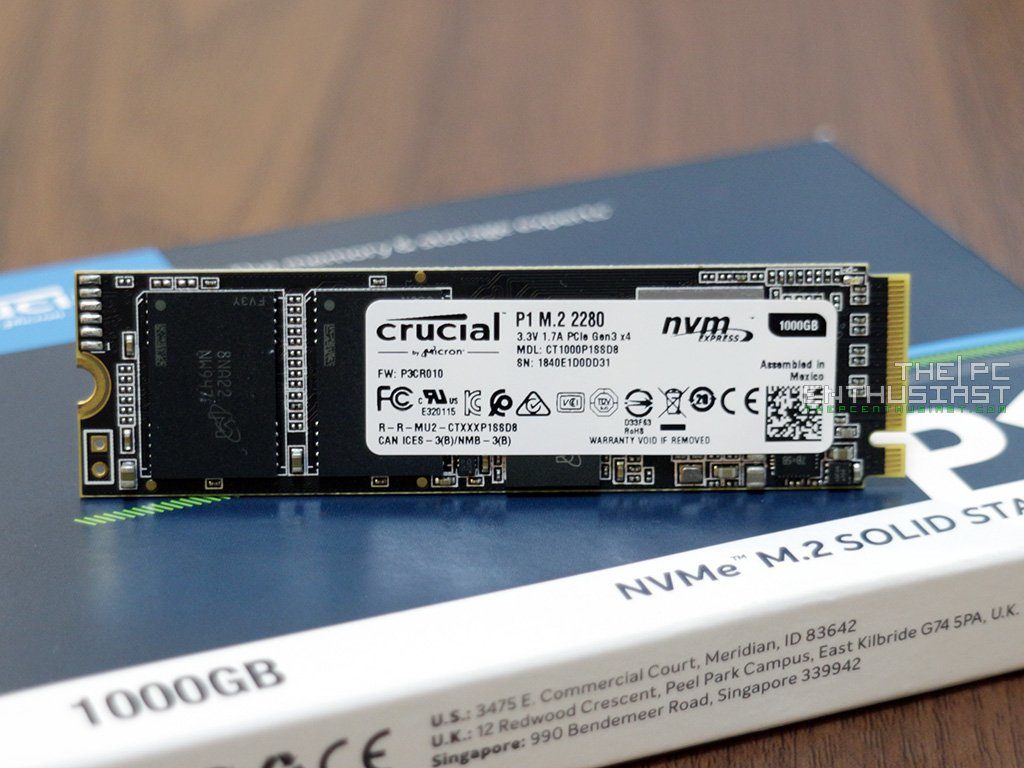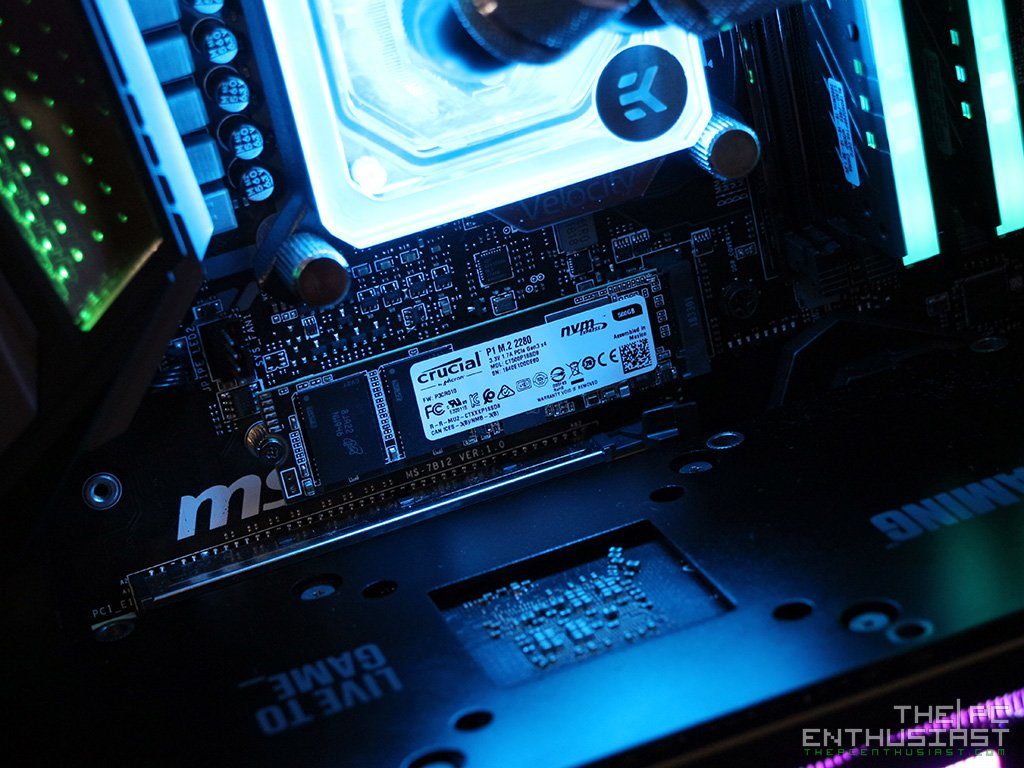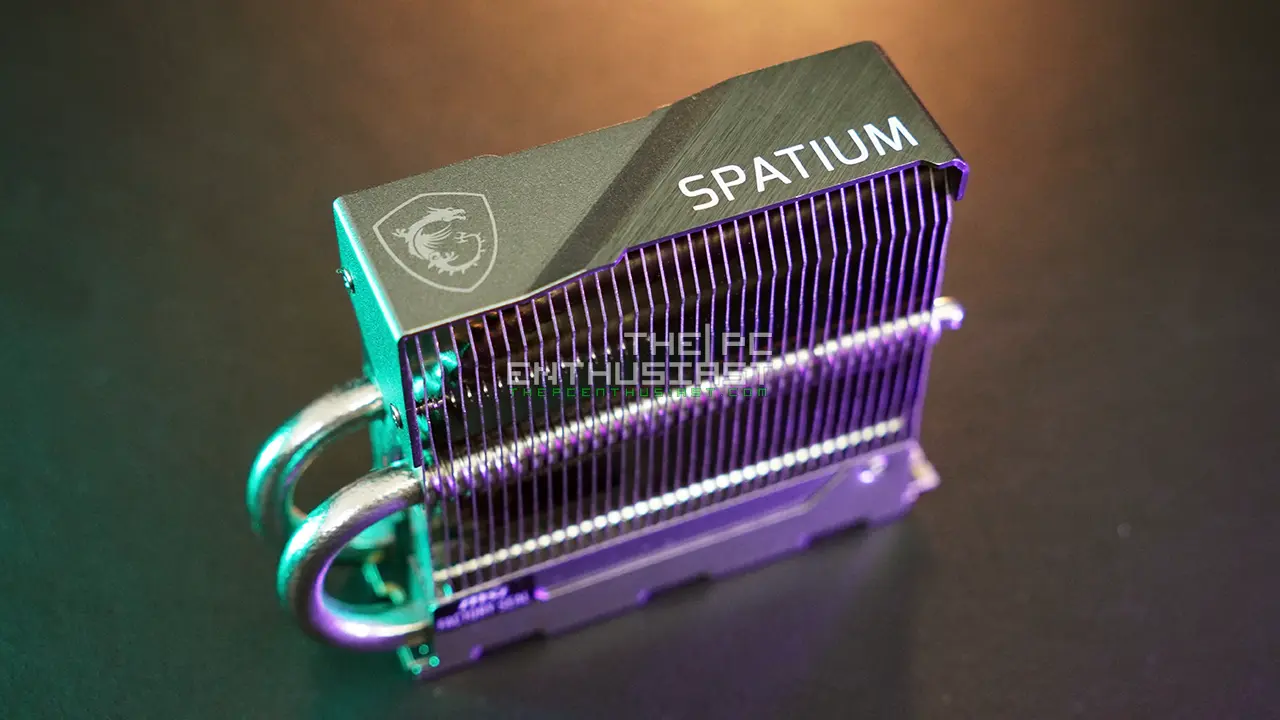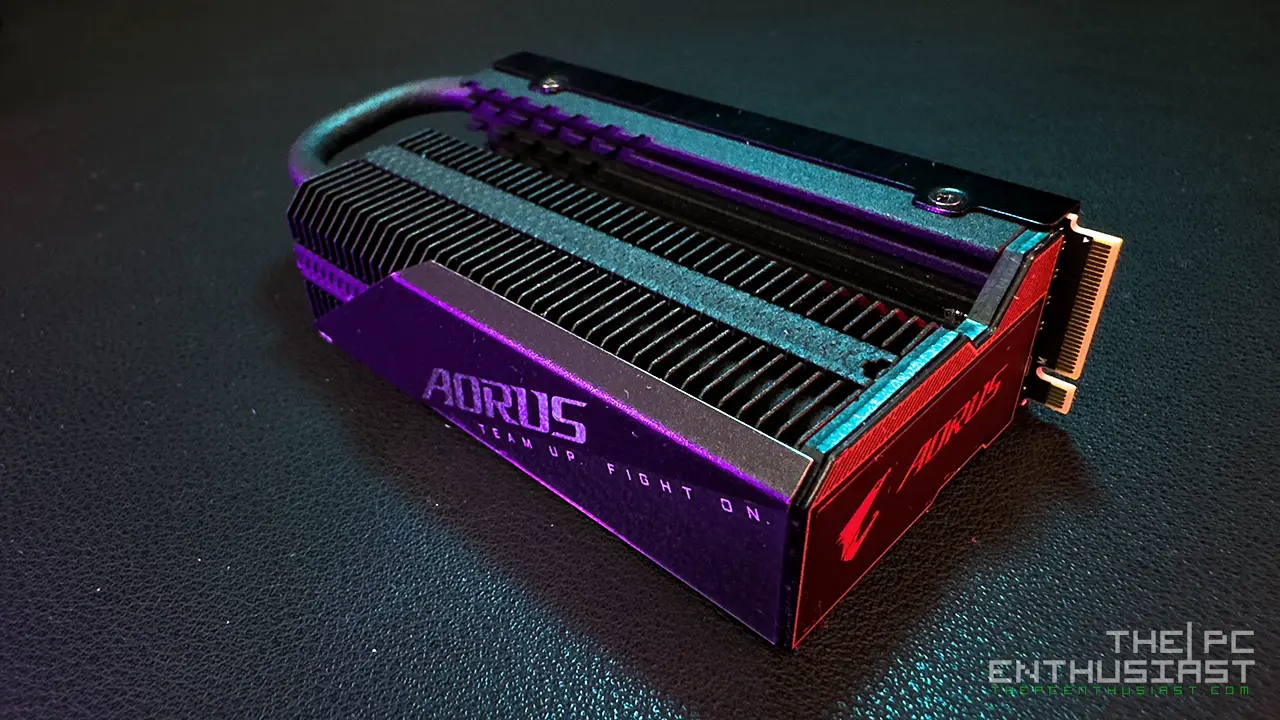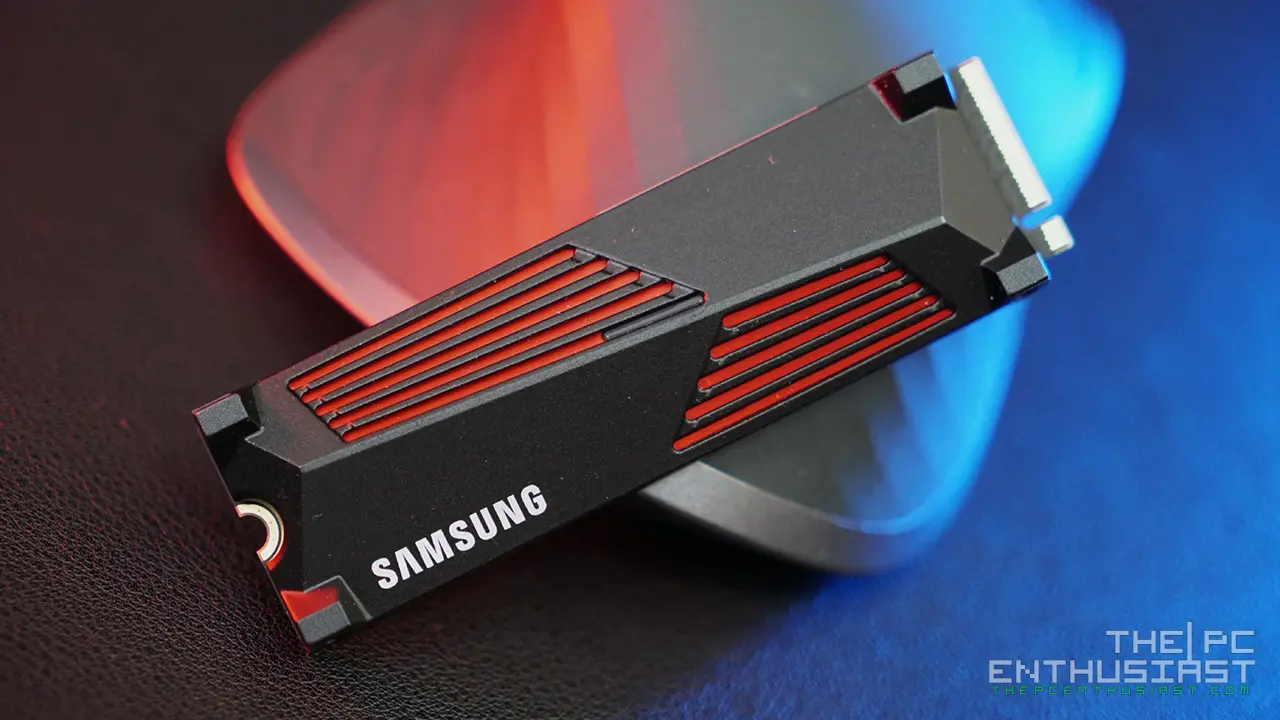Today we are going to review the Crucial P1 M.2 NVMe SSD, the company’s entry level and budget friendly NVMe SSD. We have the 1TB and 500GB capacity to test since each capacity does not have the same performance in general. In this review, we are also going to compare the Crucial P1 vs Kingston A1000, the company’s budget M.2 NVMe SSD. We are also going to compare the Crucial P1 vs high-end NVMe SSDs like the WD Black 3D and Samsung 970 EVO. You’ll also going to see the performance difference between the Crucial P1 NVMe vs Samsung 860 PRO / EVO SATA SSD. In general, the Crucial P1 is faster than a SATA SSD like the Samsung 860 series; but how fast and if the price difference is worth it? If you are in the market looking for an M.2 NVMe SSD for your laptop or desktop PC, but you have a limited budget; continue reading our Crucial P1 M.2 NVMe SSD review below and find out if this SSD is the one for you.
Crucial P1 M.2 NVMe SSD Review – Featuring QLC NAND Flash
The Crucial P1 NVMe SSD features Micron’s 3D QLC NAND flash offering faster than your typical SATA SSD performance while keeping the price down. The P1 uses NVMe/PCIe Gen3 x4 interface and supports industry-standard 512-byte sector size. It also features NVMe low power states and native command queuing with 256-command support. Like most of the SSDs nowadays, the Crucial P1 also features NVMe-standard self-monitor, analysis and reporting technology or commonly known as SMART command set. It also has power loss protector for data-at-rest.
QLC NAND flash aren’t the fastest type of NVMe SSDs. It’s definitely cheaper, but at the expense of performance, especially write speeds. The Crucial P1 offers sequential 128KB read speed of up to 2,000MB/s; and sequential 128KB write speeds of up to 1,750 MB/s (2TB variant). In terms of reliability, the P1 NVMe SSD has an MTFF rate of up to 1.8 million hours or up to 400TB of total bytes written (2TB variant). It also features static and dynamic wear leveling.
The Crucial P1 NVMe SSD is available in capacities of 500GB and 1TB, and a 2TB capacity will be coming in the near future. You can check out the rest of its features from the specifications table below.
Crucial P1 M.2 NVMe SSD Specifications
| Crucial P1 | 1TB | 500GB |
|---|---|---|
| Part Number | CT1000P1SSD8 | CT500P1SSD8 |
| Sequential Read | 2,000 MB/s | 1,900 MB/s |
| Sequential Write | 1,700 MB/s | 950 MB/s |
| 4KB Random Read | 170K IOPS | 90K IOPS |
| 4KB Random Write | 240K IOPS | 220K IOPS |
| MTTF (Opt. Hours) | 1.8 Million | 1.8 Million |
| Drive Lifetime (TBW) | 200TB | 100TB |
| Idle Power (Max) | 800 mW | 800 mW |
| Sequential Writes (Max) | 8,000 mW | 8,000 mW |
| Non-operating shock | 1500G/0.5ms | |
| Non-operating vibration | 5-800Hz @ 3.1G | |
Packaging and Closer Look
Crucial’s packaging is quite simple and straight forward. The capacity is printed on the lower left portion of the box.
Both the Crucial P1 1TB capacity and the 500GB have a single-sided M.2 2280 form factor. Without the white sicker, it’s actually hard to tell which is the 500GB or the 1TB since they look very similar. Only the upcoming 2TB capacity is the double-sided one. The P1 uses Silicon Motion SM2263 controller; and with the 1TB capacity offering a 12GB minimum to 100GB maximum SLC write cache, and 5GB minimum to 50GB maximum for the 500GB variant.
For the Crucial P1 1TB capacity, it has 1GB of DDR3 cache, while the 500GB has 512GB DDR3 for its cache. Both the 1TB capacity and 500GB has two Micron 64 layer 3D QLC NAND chips; with the 1TB capacity having 512GB capacity each chip, while the 500GB capacity has half of each chip. As expected, not only does the 1TB offers faster read/write speeds, but it also has double the write endurance. The 1TB capacity has an endurance rating of 200TB total bytes written, while the 500GB only has 100TB total bytes written.
Crucial P1 M.2 NVMe SSD Test Setup
In testing the Crucial P1 NVMe SSD 1TB and 500GB capacities, I am using an MSI MEG Z390 ACE motherboard powered with an Intel Core i7-8700K CPU. Below are the rest of the system’s specifications:
Operating System: Windows 10 Pro 64bit
Motherboard: MSI MEG Z390 ACE
Processor: Intel Core i7-8700K
CPU Cooler: EK Velocity RGB with Thermaltake Pacific RL360
Memory: Ballistix Tactical Tracer RGB DDR4-2666
Graphics card: Zotac GeForce RTX 2080 Twin Fan
Storage Drives: WD Black 1TB NVMe SSD
Power Supply: Seasonic 850W Prime Titanium
Chassis: Thermaltake Core P5
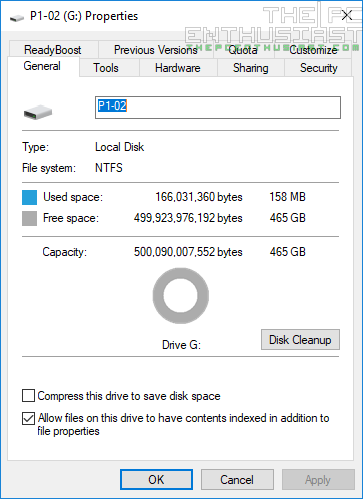
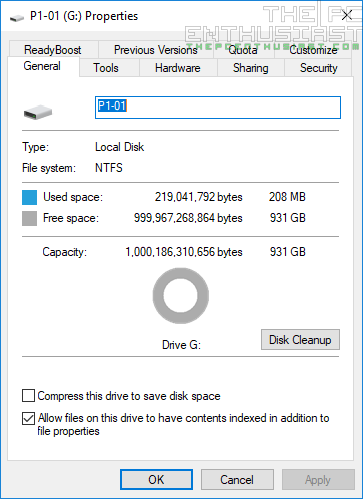
The benchmark results on the succeeding pages are the results I got during my tests using the specific sample Crucial sent. Performance may vary from one capacity to another and from one system to another (slightly). You may or may not get the same exact results shown in this review.
For comparison, I’ve included benchmark results from different SATA SSDs and a WD hard drive in the graphs. This is to give you an idea on how fast an NVMe SSD is compared to SATA-based SSD and a hard disk drive. I also included other M.2 NVMe SSD on the graphs, like the high performance WD Black 3D and Samsung 970 EVO NVMe, including Kingston’s cheaper NVMe SSD offerings.
Proceed to the next following pages for the benchmark results.
Crucial P1 500GB available on Amazon.com here
Crucial P1 1TB available on Amazon.com here



